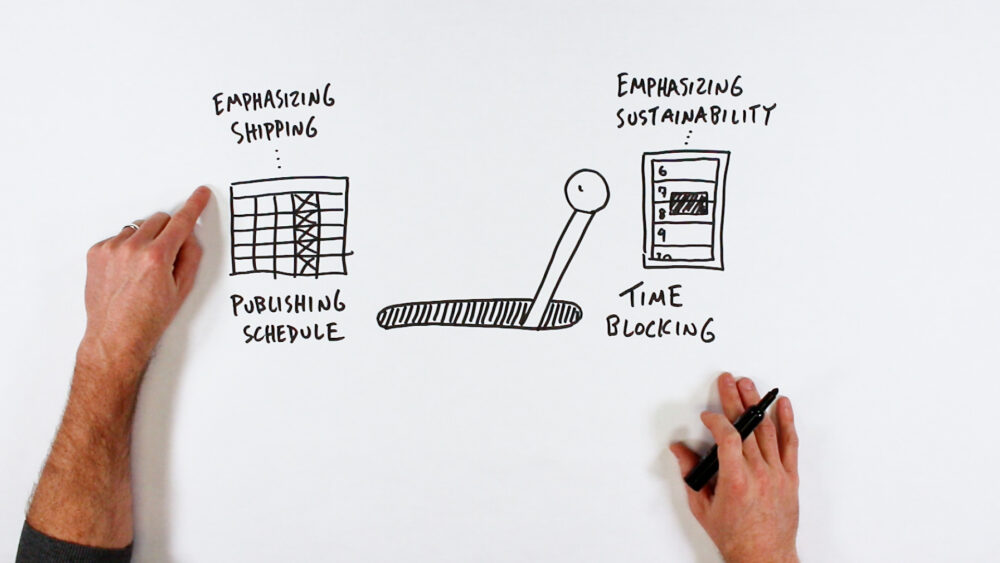I’ve been thinking lately about what it takes to develop, produce, and ultimately ship creative work. In my case, the specific creative work I focus on is making videos like the one above-videos where I’m sketching out interesting ideas from books I’m reading or supporting other visual thinkers in their ability to sketch out ideas.
I think there are a couple of primary approaches to this question, approaches that can work together but sometimes end up working against each other.
Two Approaches to Creative Work
1. Establishing a Publishing Schedule
This is where you decide how frequently you will make and finish something. The publishing part is about how regularly you complete a piece of work and move on to something different. Is it something you’ll finish daily, weekly, or monthly? What schedule can you commit to?
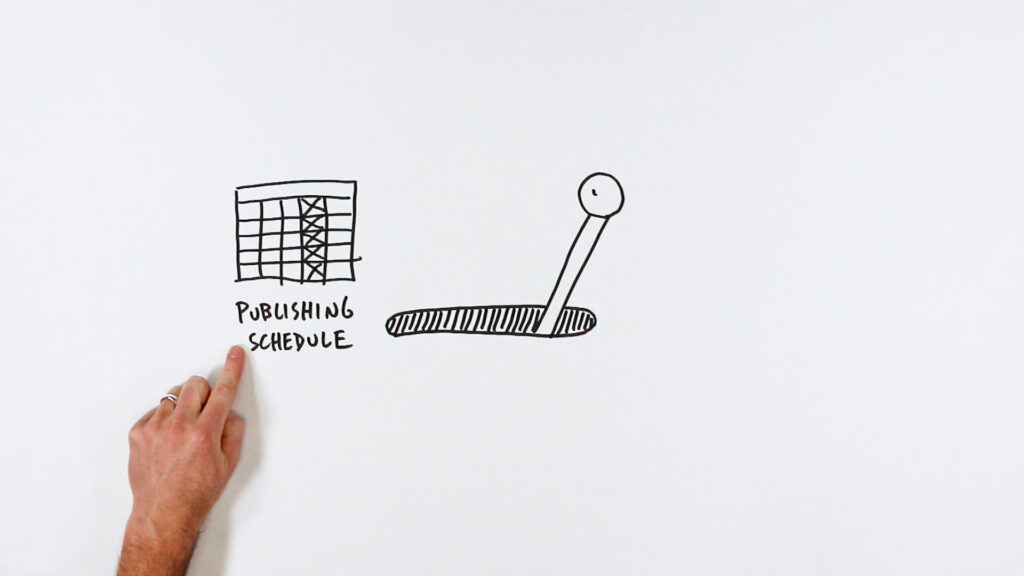
2. Time Blocking
The other approach is less about frequency and more about how much time you set aside each day. With time blocking, you reserve a certain portion of your day on your calendar and commit to working on a particular project for a specific duration—half an hour, 45 minutes, an hour and a half. Where in your calendar can you place this type of work?

This dynamic applies equally to people who have already developed a skill and are using it to make things, as well as to those who are learning something new and finishing projects along the way.
The Trade-Offs
With a publishing schedule, you’re emphasizing the shipping of creative work—the completion and publication in whatever format makes sense for you: a YouTube video, an Instagram post, a blog post, or even just showing your work to friends.
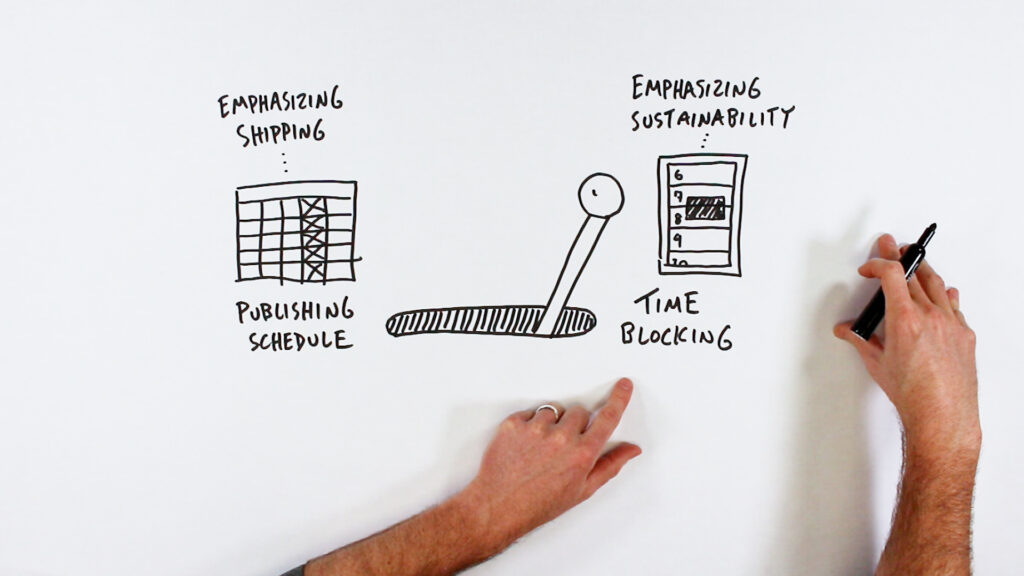
Time blocking focuses on sustainability. It’s about deciding how much time and energy you can dedicate each day. This allows you to step away from the work at your established time so that you can address other responsibilities in your personal or professional life, even if you haven’t finished the project or it doesn’t feel ready to ship.
Inspiration from Others
I’m a fan of Seth Godin, a prolific writer who advocates for starting a daily blog where you write and publish something new every day, even if no one reads it. This puts you “on the hook” and kickstarts your brain to create something daily. There’s a lot of value in this advice—consider if there’s a daily publishing habit that makes sense for you.

I’ve also been enjoying Chris Piascik’s YouTube channel. I remember following his daily drawing challenge on Twitter about a decade ago. As a professional digital illustrator, he talks about how that daily practice benefited his craft and professional career, bringing new opportunities his way.
Finding My Own Balance
When I started making videos in this format, daily was my goal. I liked the idea of being like Seth Godin with his commitment to publish every day, and I enjoyed the feeling of making and sharing videos daily. However, it wasn’t sustainable—it was too heavy a lift for a daily practice.
If you choose a daily commitment, make it a light lift—something that doesn’t consume your entire day. For heavier work, consider a weekly or monthly schedule. These videos don’t feel substantial enough for just a weekly schedule, as I have more ideas to explore than one video per week allows. With weekly publishing, I tend to put too much pressure on that single creation.
The Middle Way
I’ve landed on a middle path that includes commitment to both time spent and publishing frequency, while maintaining flexibility. For me, that means targeting two or three videos per week and establishing a specific time in my morning routine dedicated to making videos.
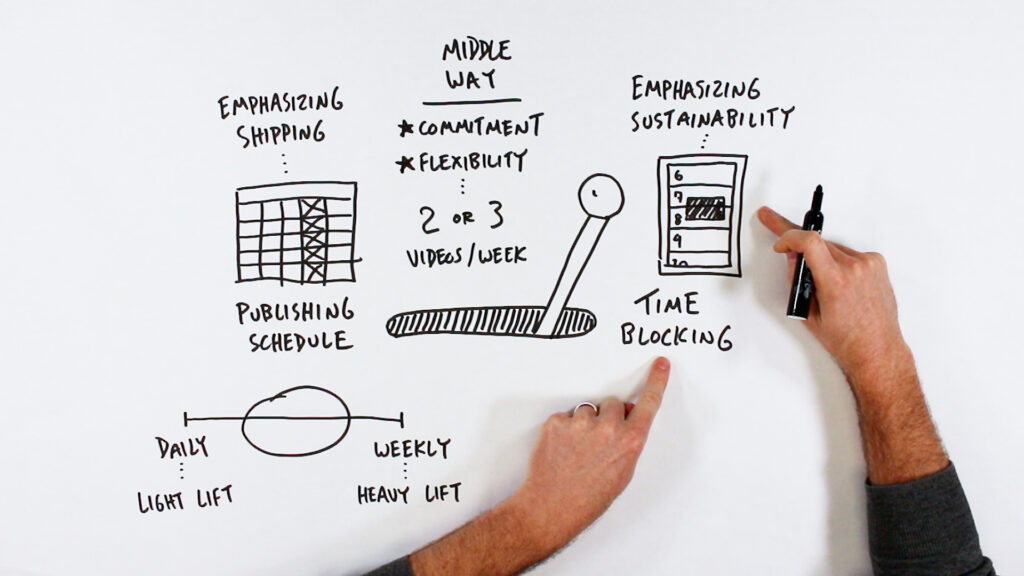
If you’re newer to creative work, I suggest starting by setting aside a chunk of your day to develop the skill you’re curious about and work on specific projects. Over time, you’ll get a sense of what publishing schedule puts you “on the hook” without leading to procrastination or perfectionism. You want some pressure to finish, but not at a pace that leads to burnout or prevents you from dedicating sufficient time to each creation.
Daily time commitment plus a flexible publishing schedule is a great combination.
Conclusion
If you’re interested in developing creative skills, completing important projects, and sharing them with others, I hope this discussion of publishing frequency and sustainable practices versus helpful pressure proves useful for your creative work and skill development.
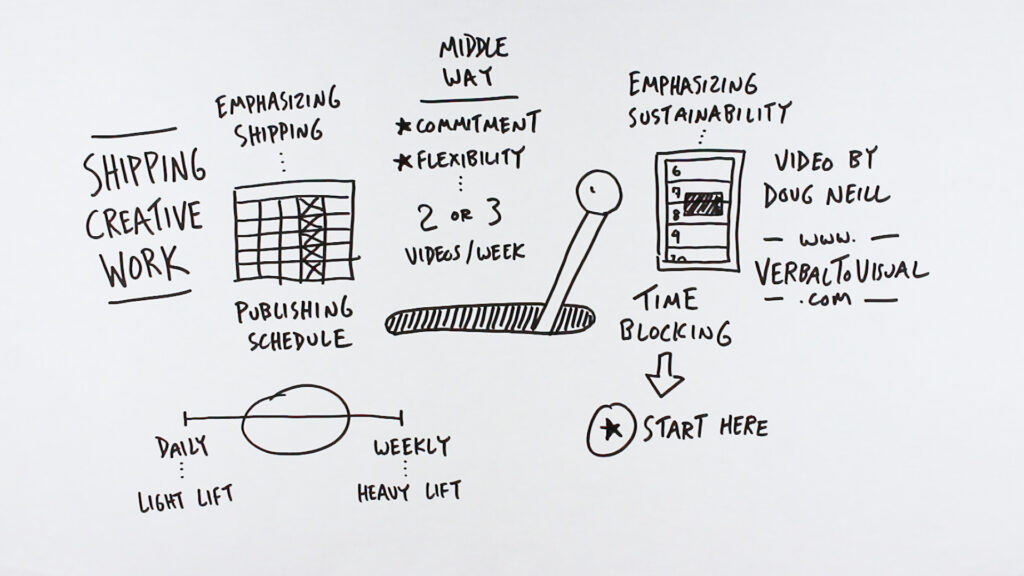
If visual thinking is a skill you’d like to focus on, check out our Sketch Instinct program, where you’ll find self-paced courses to develop your skills and regular live events to motivate your progress.
I wish you luck in finding a balance between daily work and regular completion of interesting projects.
Cheers,
-Doug
